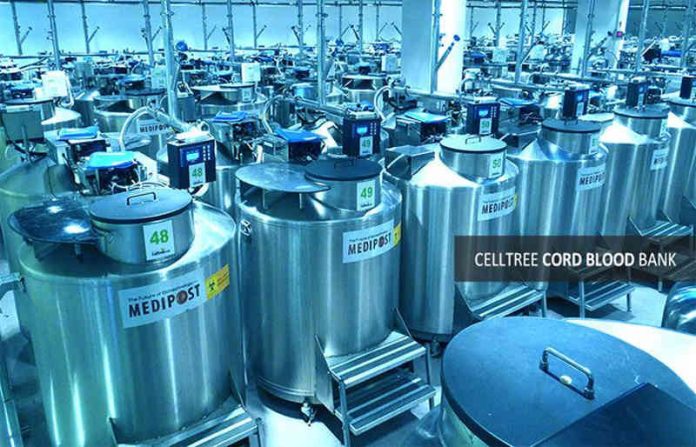The realm of medical science has seen unprecedented growth and evolution in the last few decades.
Among these advancements, cord blood storage has emerged as a beacon of hope, especially in the field of regenerative medicine and stem cell research. Weaving a narrative of both transformation and persistence, we dive into the latest advancements in cord blood storage facilities.
Table of Contents
Rise of Automation in Cord Blood Storage
A significant change sweeping through cord blood storage facilities worldwide is the adoption of automation. Automation promises not just better efficiency but also heightened accuracy and reliability.
Previously, the process of storing cord blood was labor-intensive, involving manual handling for collection, processing, and storage.
The potential for human error was a major concern, with even minor mistakes potentially impacting the quality and usability of stored cord blood. With the advent of automation, these processes have been streamlined and standardized. Machines now take care of tasks such as volume reduction and cryopreservation, reducing the risk of contamination and errors.
The second wave of automation is emerging in the form of robotics. Robotic technology is increasingly being used for storing and retrieving cord blood units in storage banks. This method reduces the potential for human error even further, ensuring the safe handling of samples.
- Automation boosts efficiency, enabling quick processing and storage of cord blood.
- Automation increases accuracy, reducing human error and enhancing reliability.
- Robotic technology promises safer storage and retrieval of cord blood units.
The Leap towards Digital Management Systems
The cord blood industry is embracing digital transformation. Digital Management Systems (DMS) have now become an integral part of the workflow, offering better tracking, accessibility, and overall management of stored cord blood.
A DMS essentially helps track the journey of every cord blood unit, right from collection to storage. It ensures traceability, a crucial aspect considering the long storage period of cord blood. A digitized system also aids in maintaining compliance with local regulations and international standards like the AABB and FACT.
Moreover, DMS enhances the accessibility of data for patients and healthcare providers. It provides comprehensive data on the cord blood unit, including viability, count, and other critical parameters. Such information becomes vital during transplantation or research, improving the prospects of successful outcomes.
Embracing Next-Gen Cryopreservation Techniques
In addition to automation and digital management, cord blood storage facilities are also adopting next-generation cryopreservation techniques to optimize storage conditions and extend the longevity of cord blood units.
Controlled-rate freezing is one such advancement that has transformed the landscape of cord blood cryopreservation. Instead of abruptly freezing the cells at extremely low temperatures, controlled-rate freezing enables a gradual decrease in temperature. This method significantly minimizes cellular damage, ensuring a higher viability of cells post-thawing.
Another promising development is the utilization of advanced cryoprotectants. These are substances used to protect biological tissue from freeze damage. The latest cryoprotectants are designed to minimize ice crystal formation and cell dehydration, further ensuring the integrity and viability of cord blood units during long-term storage.
Enhancing Quality Control Measures for Superior Outcomes
Quality control measures play a pivotal role in the cord blood storage process, ensuring that stored units are viable, potent, and ready for use whenever needed. The industry’s focus has now shifted to implement advanced quality control measures for superior outcomes.
One such advancement is the integration of real-time monitoring systems into storage units. These systems continuously monitor the temperature and pressure conditions within the storage units. Any deviation from the set parameters triggers an immediate alert, ensuring corrective action before any potential damage can occur. This type of real-time monitoring significantly enhances the reliability of long-term cord blood storage.
Alongside real-time monitoring, the advent of advanced diagnostic tools for cord blood screening has revolutionized quality control. These tools help determine the viability and potency of cord blood units more accurately, thereby improving their potential usability in transplantation and research.
- Real-time monitoring systems ensure optimal storage conditions and minimize the risk of cell damage.
- Advanced diagnostic tools enable more accurate screening of cord blood units, optimizing their potential for clinical use.
Innovations in quality control are ushering in a new era of cord blood storage, characterized by enhanced reliability, efficacy, and hope.
These advancements are paving the way for the safe, effective use of cord blood in the battle against a range of diseases, thus bringing us a step closer to realizing the full potential of this invaluable medical resource.
Conclusion: Stepping into a Promising Future
Cord blood storage facilities have undergone immense changes over the past few years. Automation has made the process more efficient and accurate, eliminating the risk of human error.
Digital management systems have ensured traceability and accessibility, improving the overall quality of cord blood banking. Finally, advancements in cryopreservation techniques have enhanced the viability and longevity of stored cord blood units.
Indeed, these advancements are significant milestones in the journey of cord blood storage. They have not only elevated the standards of the industry but have also redefined what constitutes the best cord blood banking.
As medical science continues to evolve, cord blood storage facilities stand as a testament to our enduring hope – a hope rooted in the potential of cord blood to transform lives and reshape the future of medicine.
















